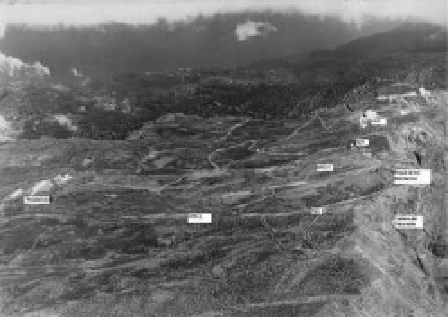Environmental Engineering Reference
In-Depth Information
Big Telescopes foundations in volcanic environments
W. llamosas
Department of Construction Engineering, University of La Laguna, Tenerife, Canary Islands, Spain
aBsTRacT: The development of the astrophysics science requires new technical and more sophisti-
cated tools to complete the observation tasks successfully. During the last years, some teams are develop-
ing bigger telescopes with the latest technologies, allowing to obtain better results in the astronomical
observations. in this way, the spanish Government and some partners developed and built a telescope with
the biggest primary mirror of the world called “GRan TelescoPio canaRias” (GRanTecan)
in la Palma, canary islands, spain, being considered the biggest telescope of the world. as the engineer
of the enclosure Group, responsible of the civil Work and auxiliary installations of the GRanTecan
project, i will show in this paper a summary of the geotechnical studies, a brief description of some of
the mandatory requirements for the telescope pier foundations, and the final design to accomplish the
foundations and structure project requirements.
1
inTRoDUcTion
To develop the project and design of this telescope
the enterprise Gran Telescopio canarias, s.a.
(GRanTecan s.a.) was created. its Project
office is responsible to manage all tasks needed
to build this telescope, its future operation, man-
agement and new developments. These tasks
include the development of technical specifica-
tions, execution of preliminary studies, definitive
studies, design of some of the different telescope
systems, contracting companies responsible for
the implementation of other telescope systems
and its operation. The Project office was divided
into the following groups: enclosure, Telescope,
optics, control, instrumentation and adminis-
tration. The activities of the first two groups are
directly related with the subject of this document.
This paper presents a summary of the require-
ments starting, location chosen, preliminary and
definitive geotechnical studies, and provides a
brief description of the pier and enclosure build-
ing final solution.
Figure 1. View of site 1 and site 2 in Roque de los
Muchachos observatory.
related to technical and economic feasibility of its
implementation, the final location was chosen.
2.1
Geological and geotechnical environments (8)
site 1 is located above the “cono de los Muchachos”
formed by the accumulation of pyroclastics and
site 2 is located on an area with a little inclination
among the Telescopio nazionale Galileo and the
Roque de los Muchachos observatory residence,
formed by the “lavas del Galileo”. (8).
2
PossiBle locaTion. PReliMinaRY
sTUDies siTe selecTion
of all the possible locations for the telescope, two
were decided to be studied in more detail. These
two possible locations are known as site 1 and
related to the quality of astrophysical observa-
tion, meteorological data and technical parameters
2.1.1
“Cono de los Muchachos”
Presents the classical structure and composition of
the pyroclastic outfall fan cone. although a part
of the cone has been destroyed by erosive agents,














